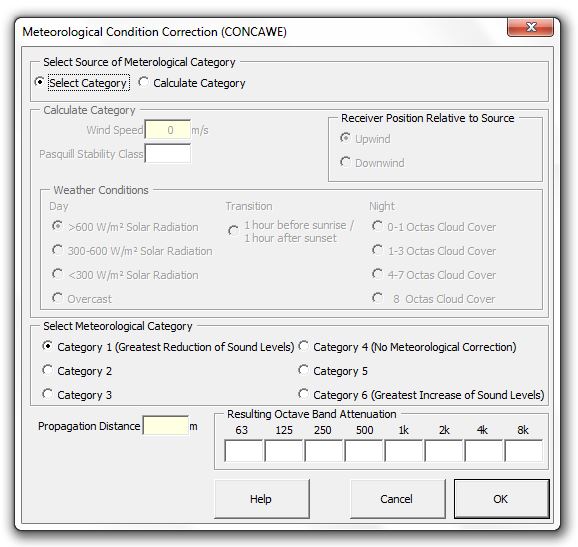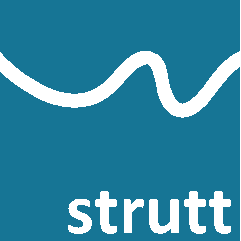

Strutt|Environmental Noise|CONCAWE Meteorological Correction inserts a meteorological correction (dB) into the active row of the worksheet. Note that this correction is only valid for source-receiver propagation distances greater than 100 m.

The correction to predicted noise levels due to meteorological conditions can be calculated for each of the six CONCAWE meteorological categories, ranging from Category 1 (greatest reduction in noise level), through Category 4 (no change to noise level) to Category 6 (greatest increase in noise level). The category may be selected directly, or else calculated based on the Pasquill stability class of the atmosphere and the wind speed and direction.
The Pasquill stability class is determined from the meteorological conditions using the following relationships:
| Wind Speed*, m/s | Daytime Incoming Solar Radiation, mW/cm2 |
1 hour before Sunset or after Sunshine |
Night-Time Cloud Cover (octas) |
|||||
| > 60 | 30 - 60 | < 30 | Overcast | 0 - 3 | 4 - 7 | 8 | ||
| `<=` 1.5 | A | A - B | B | C | D | F or G** | F | D |
| 2.0 - 2.5 | A - B | B | C | C | D | F | E | D |
| 3.0 - 4.5 | B | B - C | C | C | D | E | D | D |
| 5.0 - 6.0 | C | C - D | D | D | D | D | D | D |
| > 6.0 | D | D | D | D | D | D | D | D |
| Metereological Category |
Pasquill Stability Category | ||
| A, B | C, D, E | F, G | |
| 1 | v < -3.0 | - | - |
| 2 | -3.0 < v < -0.5 | v < -3.0 | - |
| 3 | -0.5 < v < 0.5 | -3.0 < v < -0.5 | v < -3.0 |
| 4* | 0.5 < v < 3.0 | -0.5 < v < 0.5 | -3.0 < v < -0.5 |
| 5 | v > 3.0 | 0.5 < v < 3.0 | -0.5 < v < 0.5 |
| 6 | - | v > 3.0 | 0.5 < v < 3.0 |
The calculations for meteorological corrections have been sourced from Appendix II, page 87 of CONCAWE.
References: